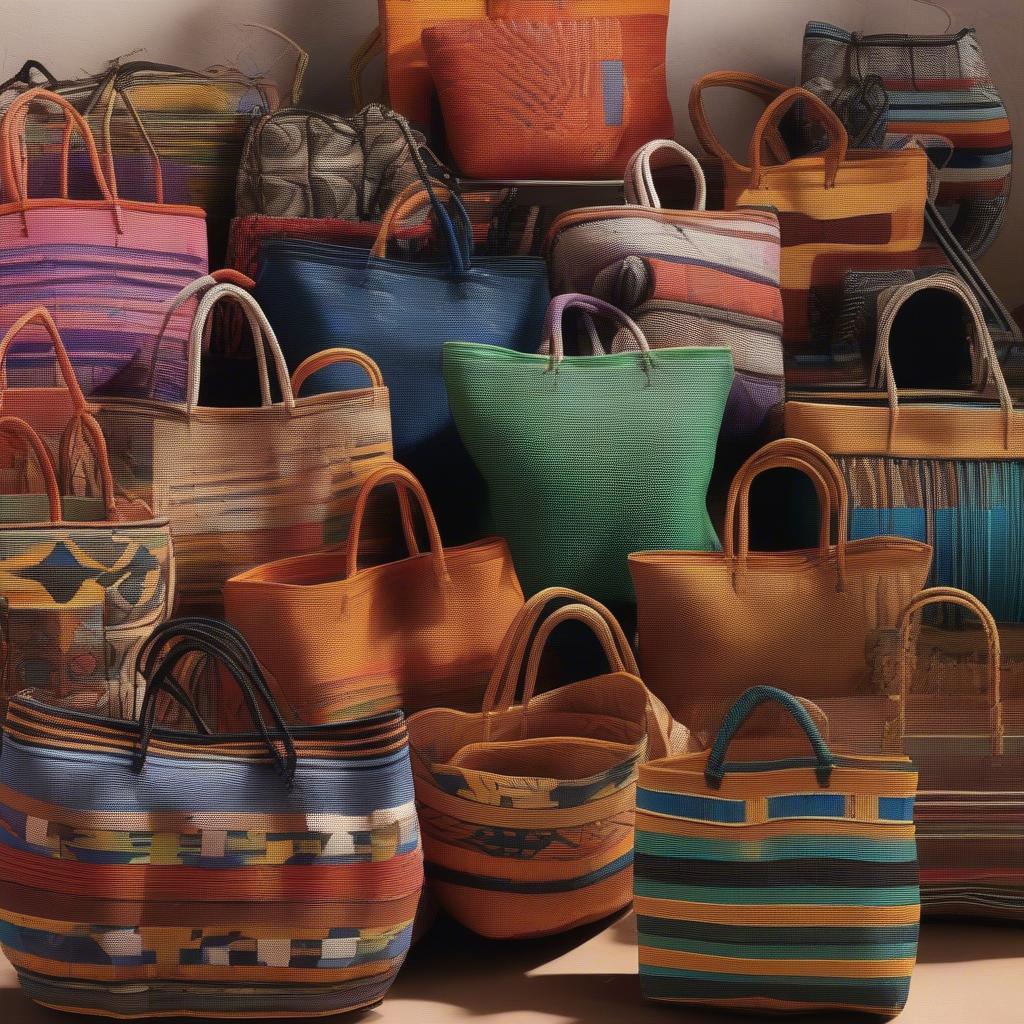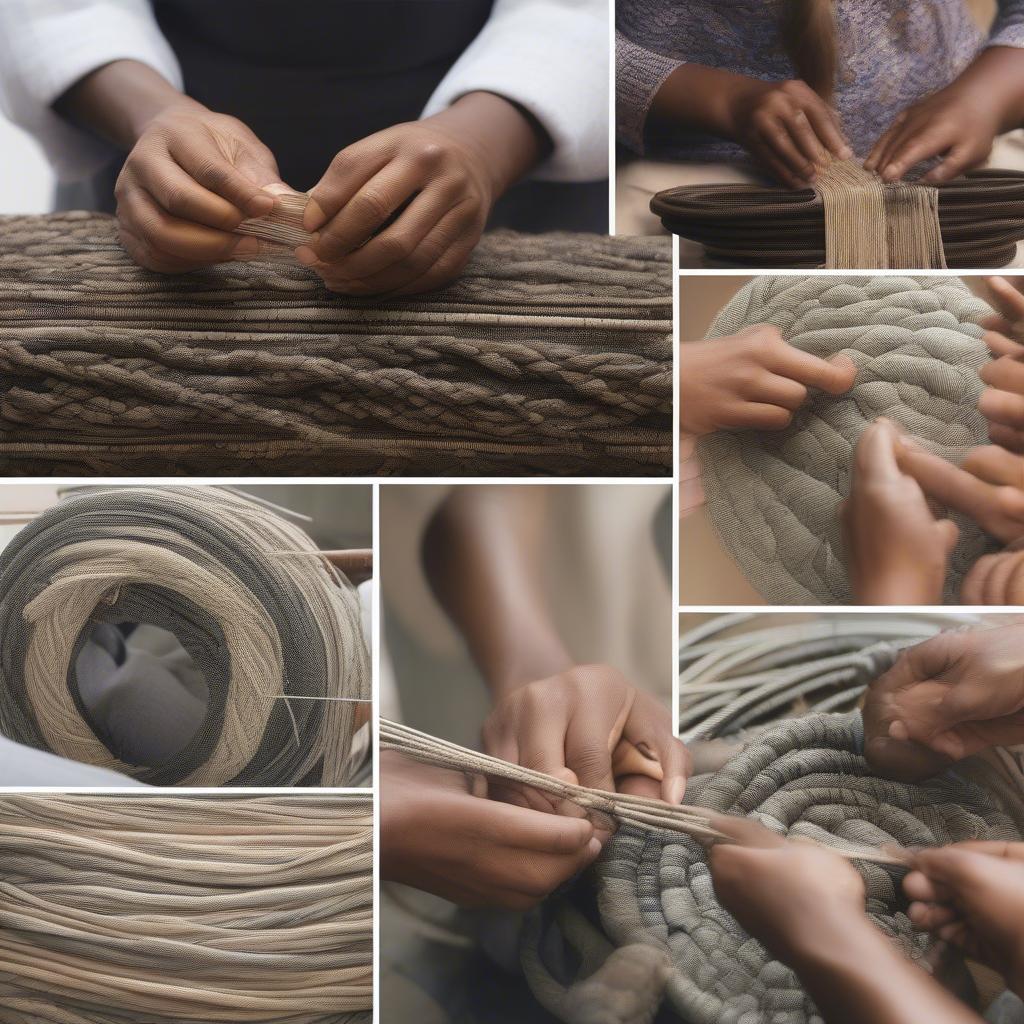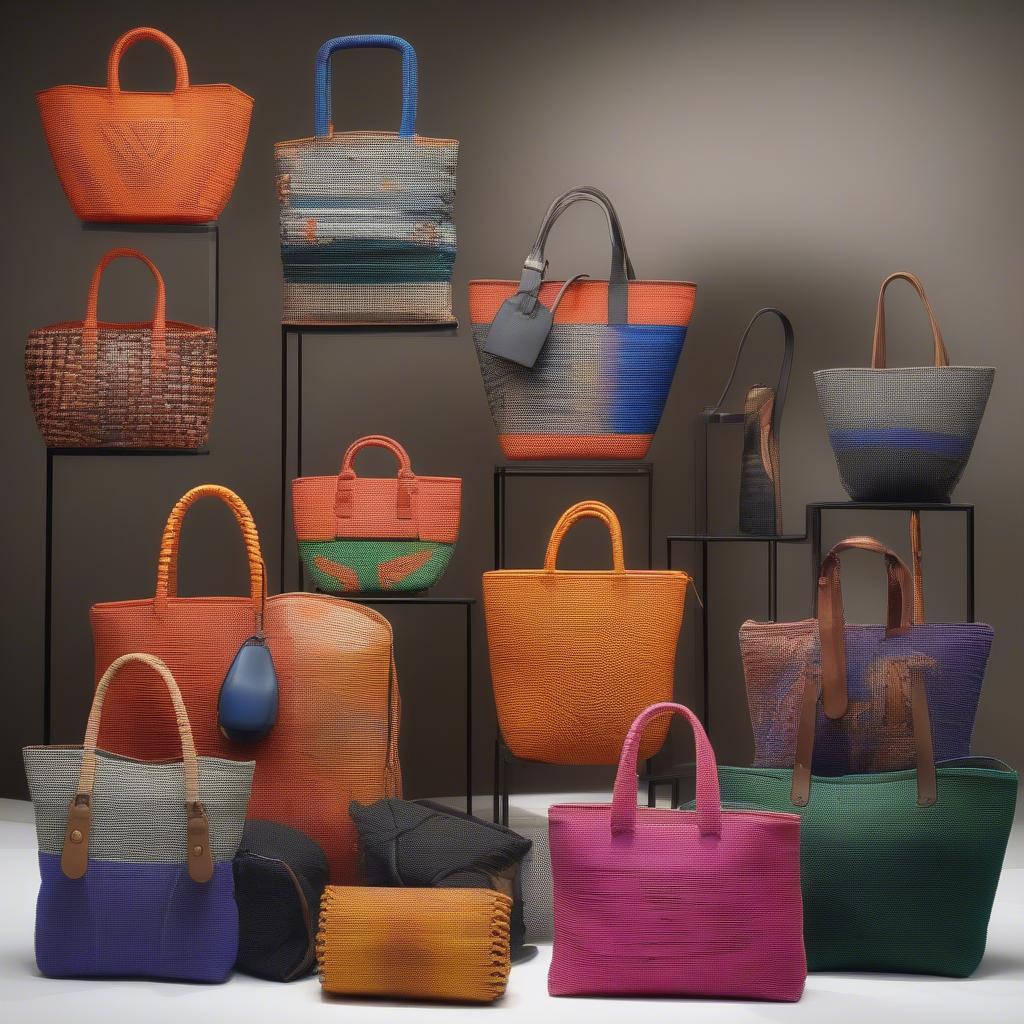Basket Weaving
Weave Bags South Africa: A Guide to Traditional and Contemporary Styles
Weave Bags South Africa are renowned for their intricate designs, vibrant colors, and cultural significance. From traditional Zulu telephone wire baskets to modern, eco-friendly shopping totes, the South African weave bag scene offers a diverse range of styles and techniques. This guide will explore the rich history, materials, techniques, and contemporary trends shaping the world of weave bags in South Africa.
A Rich Heritage of Weaving in South Africa
Weaving is an ancient art form deeply ingrained in South African culture. For centuries, various indigenous communities have used natural materials like grasses, reeds, and bark to create functional and decorative woven items, including bags. twined bags an historic finger-weaving craf. These bags served not only as practical carrying vessels but also as symbols of cultural identity, status, and artistic expression. The skill of weaving was passed down through generations, ensuring the continuation of these rich traditions.
 Traditional South African Weave Bags
Traditional South African Weave Bags
Materials and Techniques: From Telephone Wire to Ilala Palm
The materials used in South African weave bags are as diverse as the cultures that produce them. Traditionally, natural fibers like ilala palm, sisal, and sweetgrass were commonly used. However, in the 20th century, a unique and innovative material emerged: recycled telephone wire. Zulu women, known for their exceptional weaving skills, began transforming discarded telephone wire into colorful and durable baskets and bags, creating a distinctive craft that gained international recognition. Today, both traditional and modern materials are used, reflecting a blend of heritage and innovation.
Exploring Traditional Weaving Techniques
South African weaving techniques vary depending on the region and the materials used. Coiling, twining, and plaiting are among the most common methods. Coiling involves spiraling a foundation material and stitching it together with another fiber. Twining, on the other hand, uses two or more flexible elements intertwined to create a fabric-like structure. Plaiting, similar to braiding, interlaces three or more strands to form a flat or tubular shape. These intricate techniques, honed over generations, result in the unique textures and patterns characteristic of South African weave bags.
 South African Weave Bag Techniques
South African Weave Bag Techniques
Weave Bags South Africa Today: Contemporary Trends and Ethical Considerations
Today, weave bags in South Africa continue to evolve, blending traditional techniques with contemporary designs. basket weaving africa. Designers are experimenting with new materials, incorporating leather, cotton, and recycled plastics, while still honoring the rich cultural heritage of weaving. This fusion of old and new has led to a surge in popularity for South African weave bags, both locally and internationally.
Ethical Sourcing and Fair Trade Practices
As the demand for weave bags grows, so does the importance of ethical sourcing and fair trade practices. Many organizations and artisans are committed to sustainable harvesting of natural materials and ensuring fair wages for weavers. By supporting these initiatives, consumers can contribute to the preservation of traditional crafts and the empowerment of local communities.
“Supporting fair trade ensures that the incredible skill and artistry of these weavers are valued and that they receive a fair price for their work,” says Nomusa Zulu, a renowned weaver from KwaZulu-Natal.
Where to Find Authentic Weave Bags in South Africa
Whether you’re searching for a traditional Zulu telephone wire basket or a modern, designer weave bag, South Africa offers a plethora of options. Local markets, craft centers, and online platforms showcase a wide range of styles and price points.
 Modern South African Weave Bags
Modern South African Weave Bags
Conclusion: Celebrating the Art of Weave Bags South Africa
Weave bags South Africa are more than just accessories; they are tangible expressions of a rich cultural heritage. From the intricate patterns to the sustainable materials and ethical production practices, these bags tell a story of tradition, innovation, and community empowerment. By choosing a South African weave bag, you are not only acquiring a beautiful and functional item but also supporting the preservation of a vibrant art form. basket weave bucket bag manufacturers.
FAQ
- What are the most common materials used in South African weave bags?
Traditional materials include ilala palm, sisal, sweetgrass, and recycled telephone wire. Modern bags may also incorporate leather, cotton, and recycled plastics.
- Where can I buy authentic South African weave bags?
Local markets, craft centers, and online platforms offer a wide selection of weave bags. Look for vendors who prioritize ethical sourcing and fair trade practices.
- How can I tell if a weave bag is authentically South African?
Look for traditional patterns, materials, and techniques. Researching specific cultural groups and their weaving styles can also help you identify authentic pieces.
- Are South African weave bags eco-friendly?
Many South African weave bags are made with sustainably harvested natural fibers. Supporting artisans who prioritize ethical sourcing and fair trade practices ensures a more eco-conscious choice.
- What is the significance of telephone wire baskets in Zulu culture?
Zulu telephone wire baskets represent a unique blend of tradition and innovation. They showcase the resourcefulness and artistic talent of Zulu women, who transformed discarded materials into beautiful and functional objects.
- How can I care for my South African weave bag?
Depending on the material, you can typically clean your bag with a damp cloth and mild soap. Avoid harsh chemicals and direct sunlight, which can damage the fibers.
- Are South African weave bags durable?
Traditional weaving techniques create strong and durable bags. However, the longevity of your bag also depends on the materials used and how well you care for it.
When you need support, please contact us at Hanoi, Vietnam or Tech Avenue, Suite 12, San Francisco, CA 94105, USA. We have a 24/7 customer service team.
